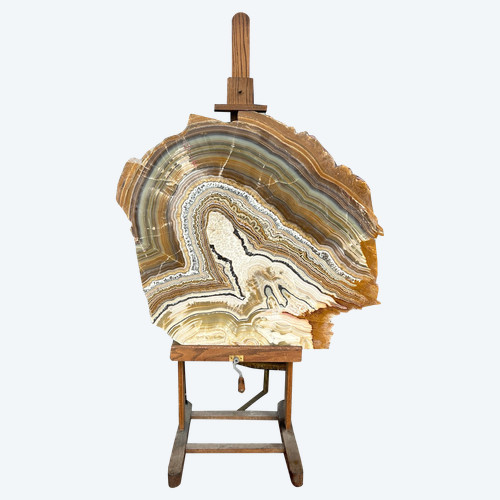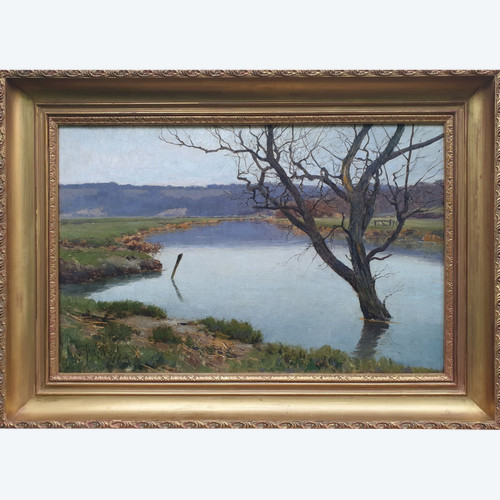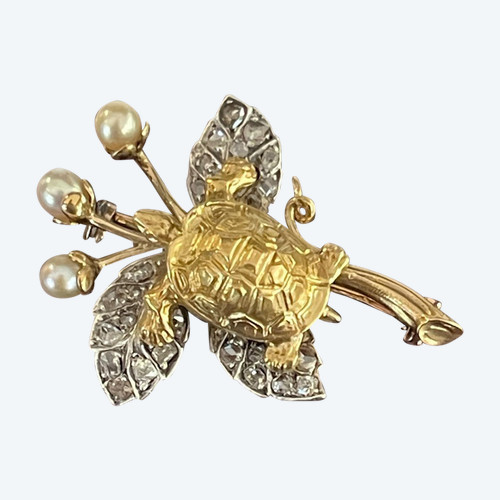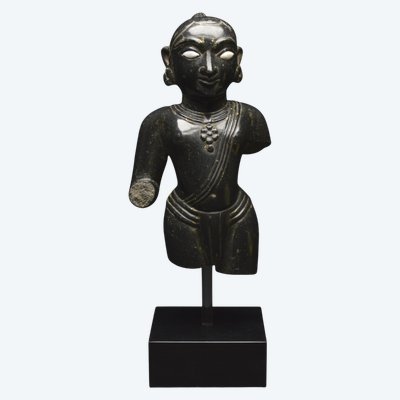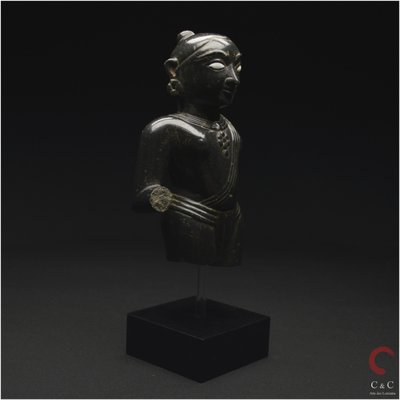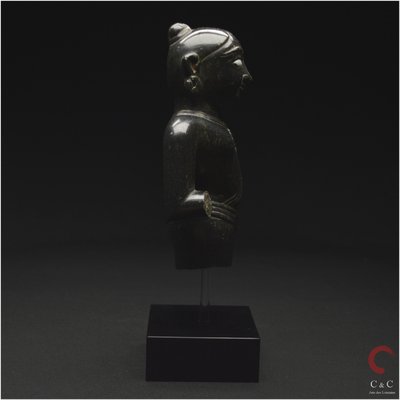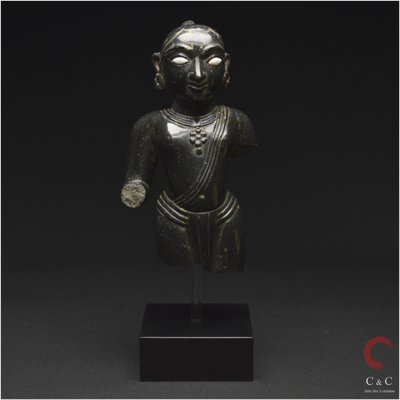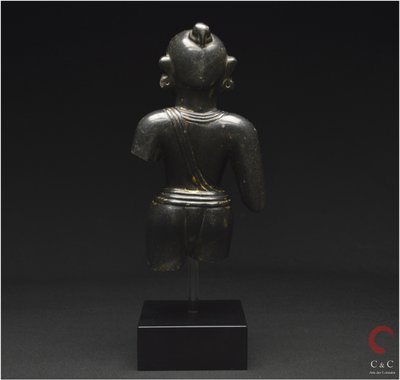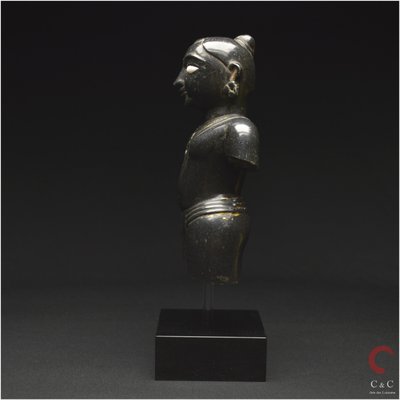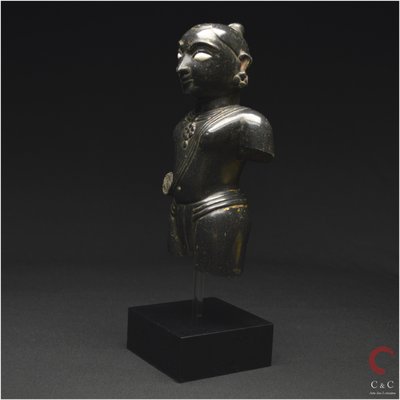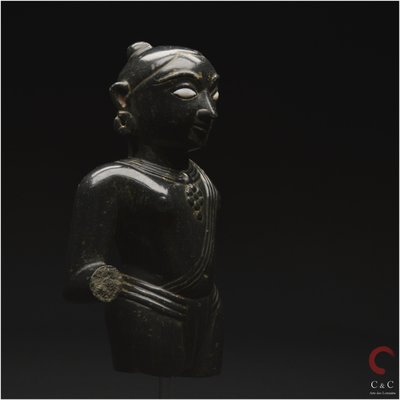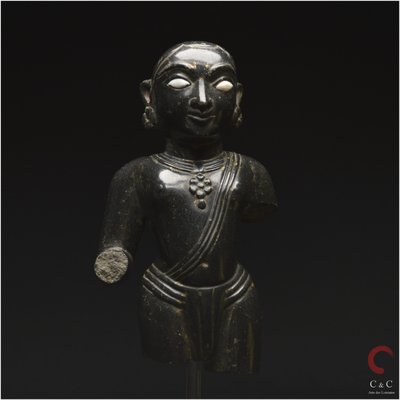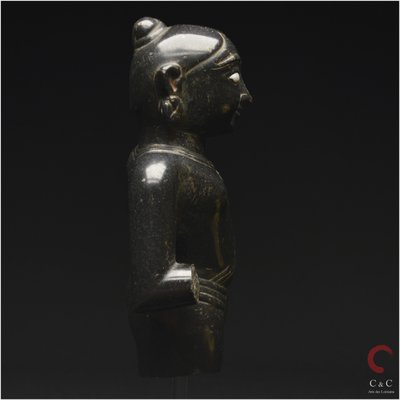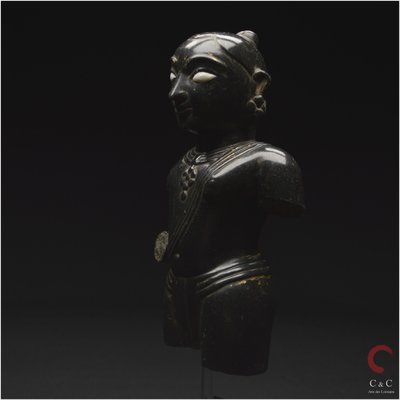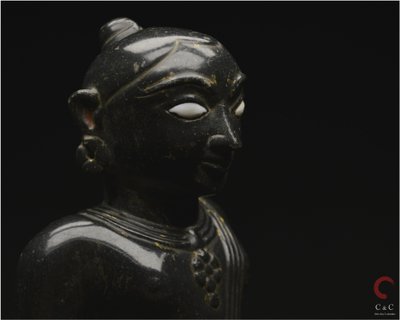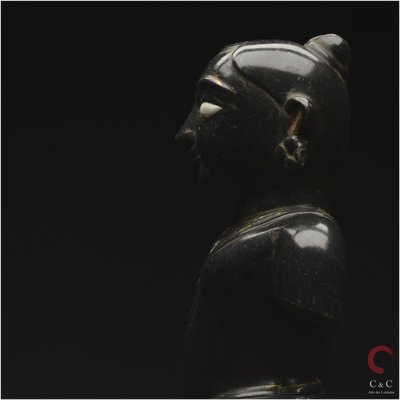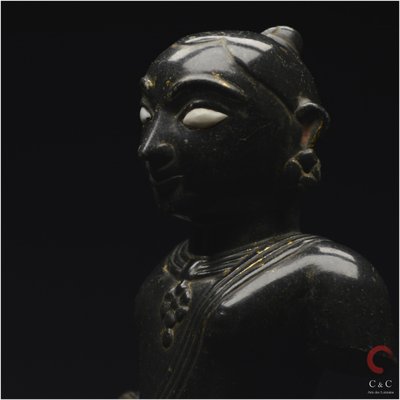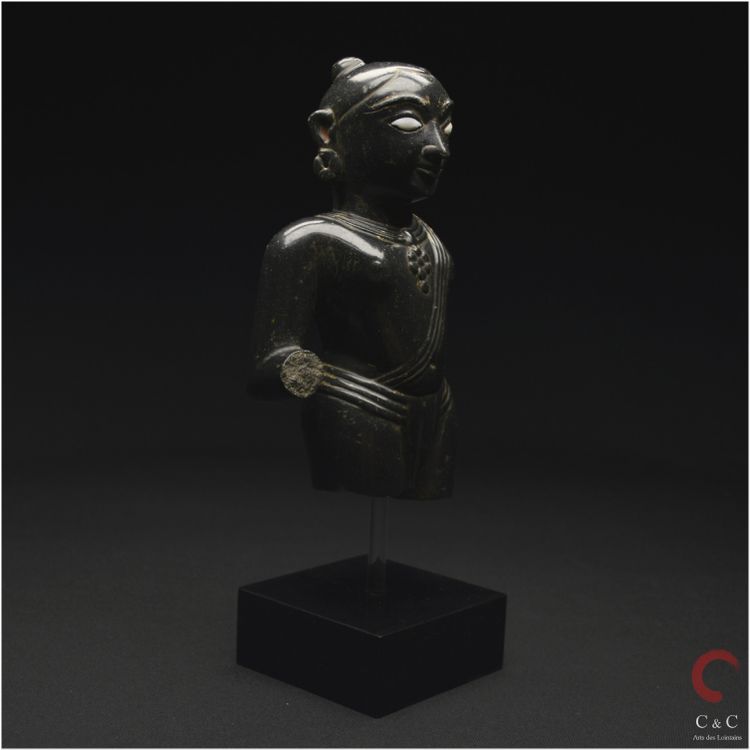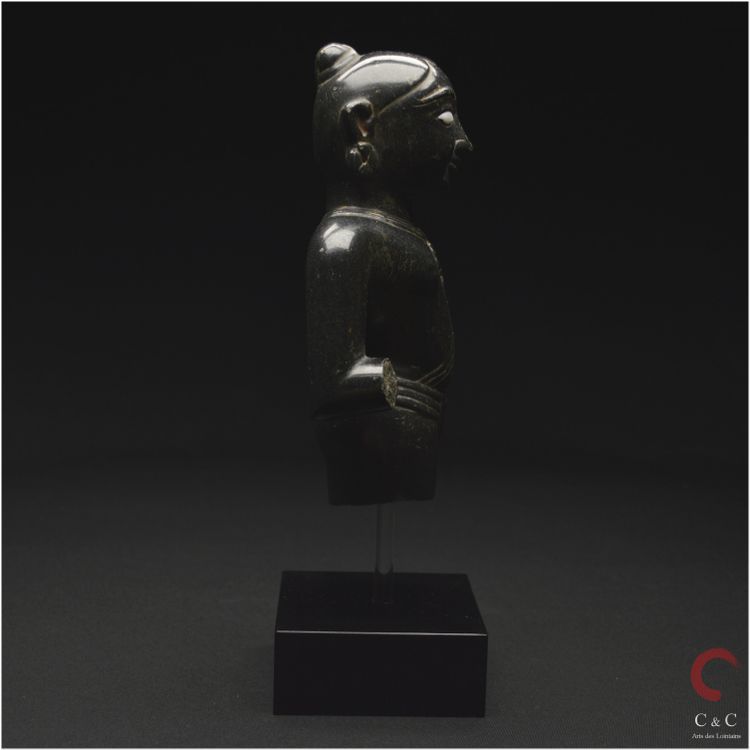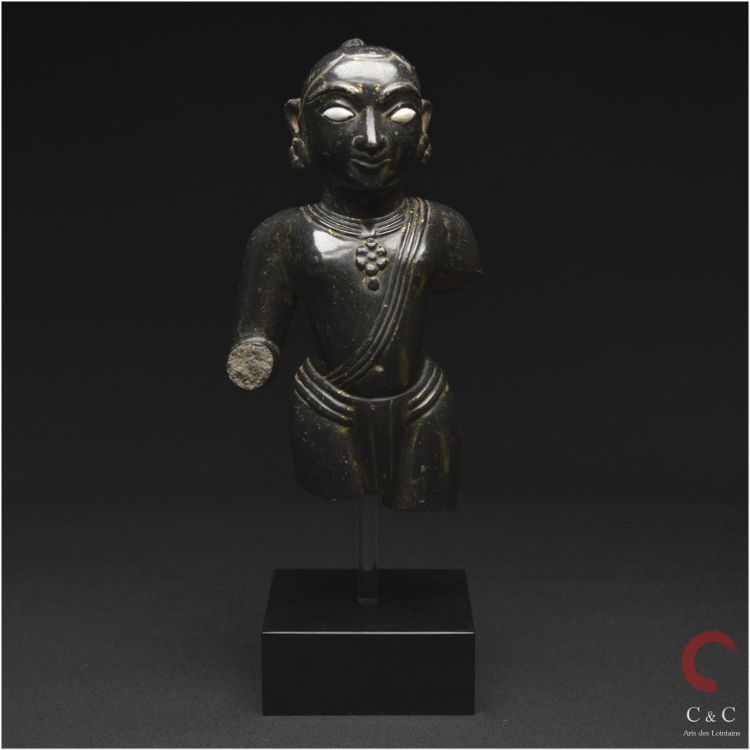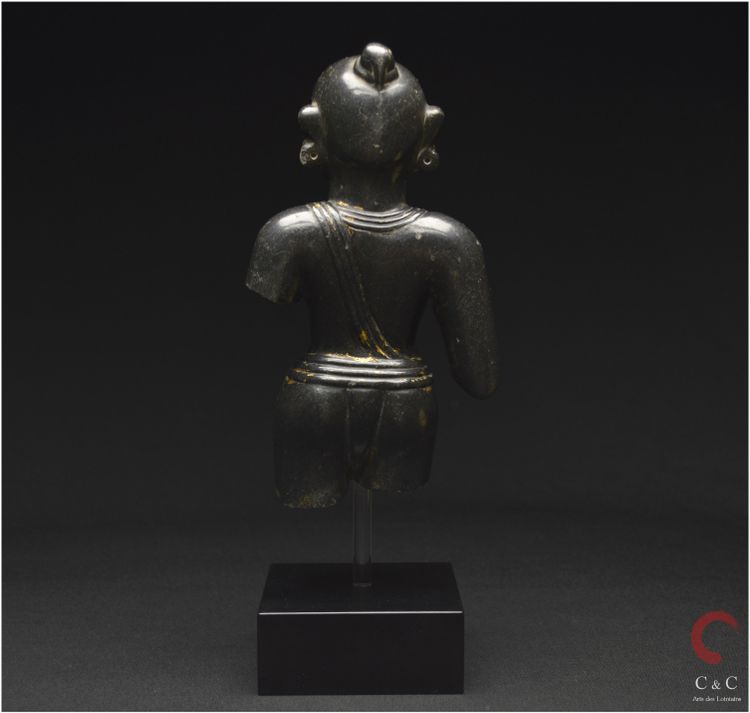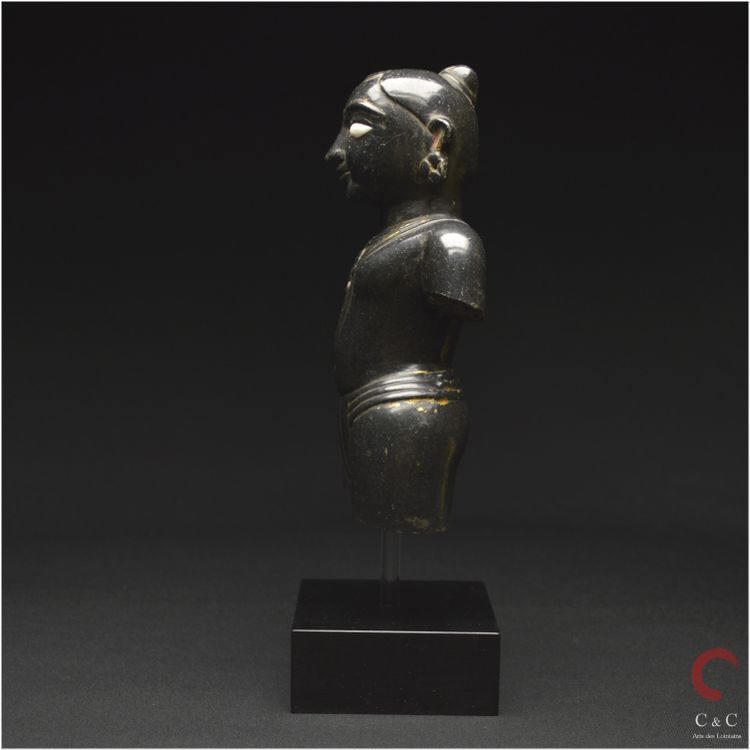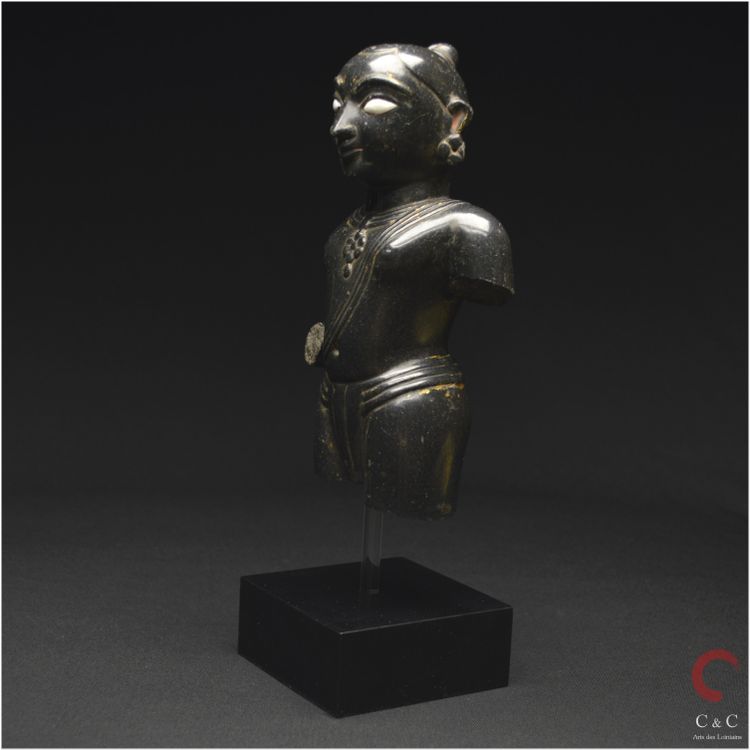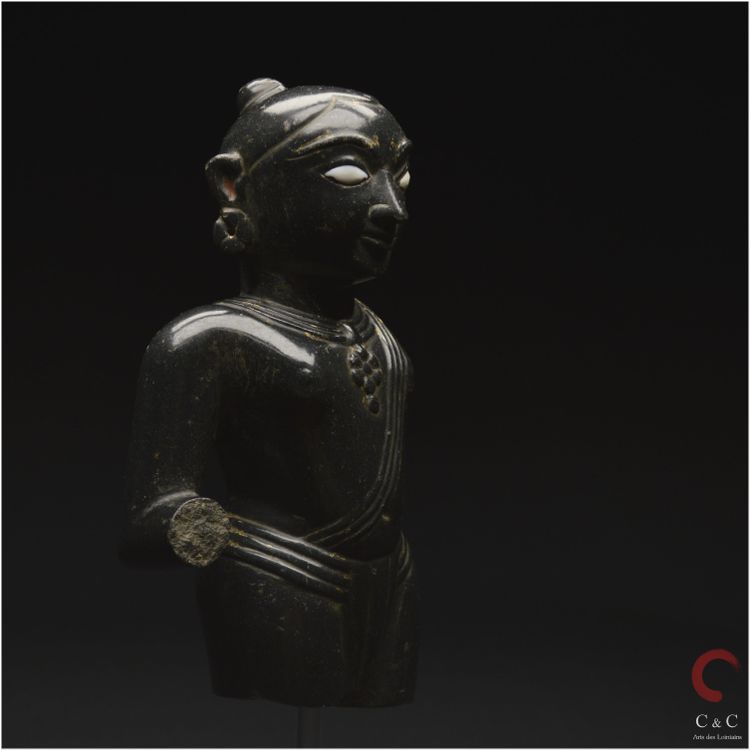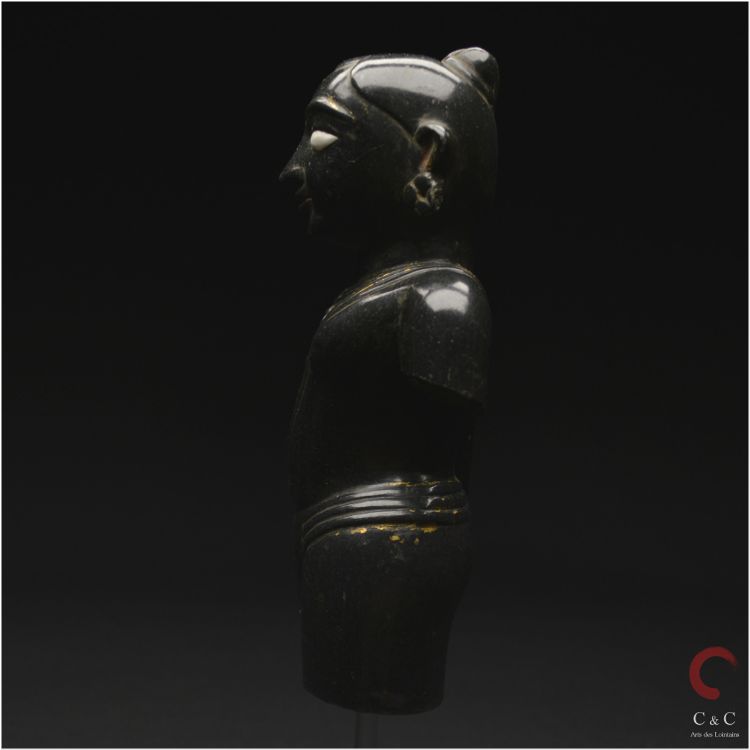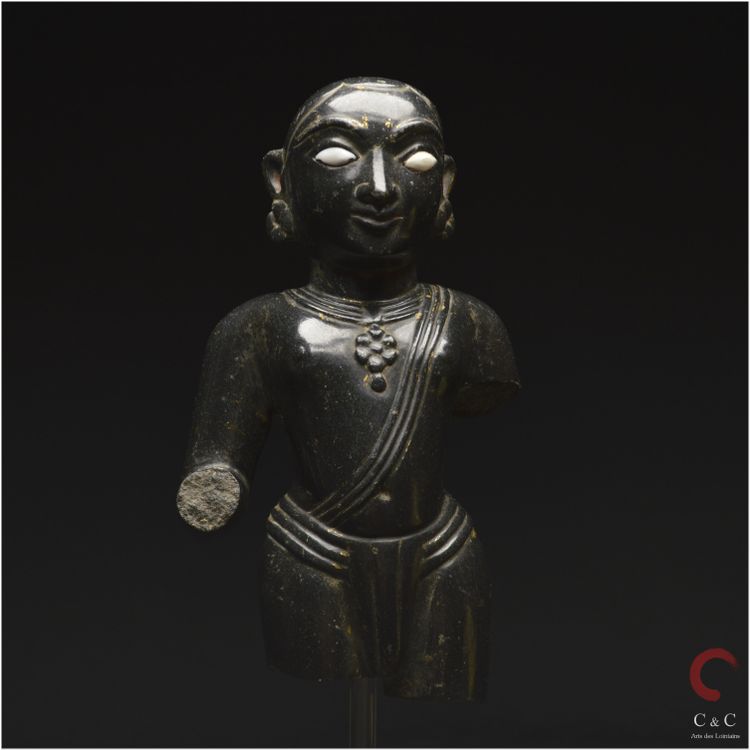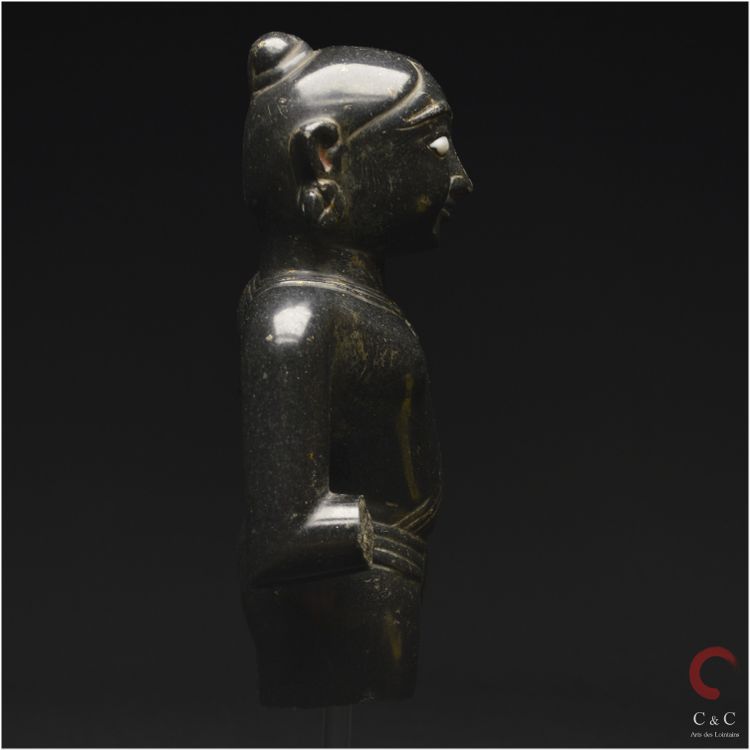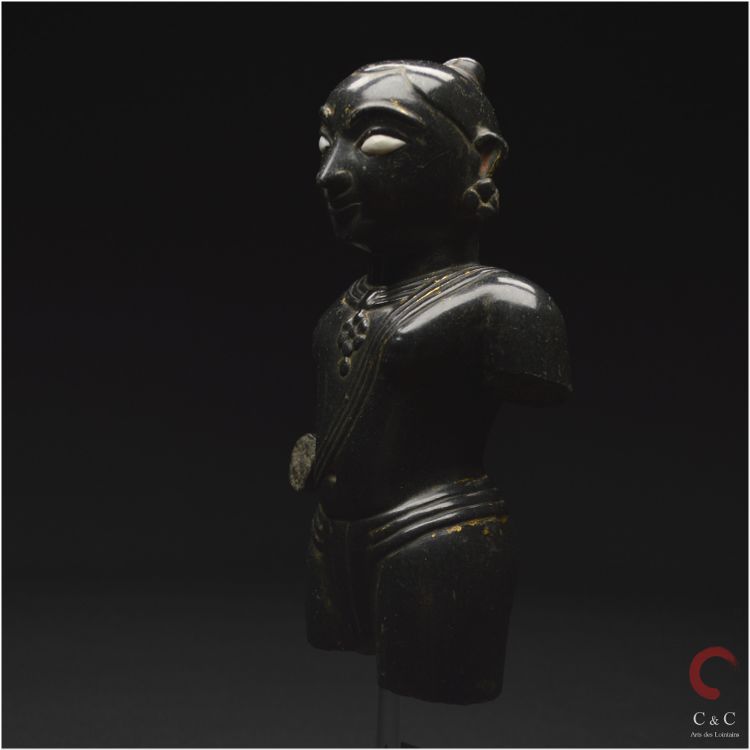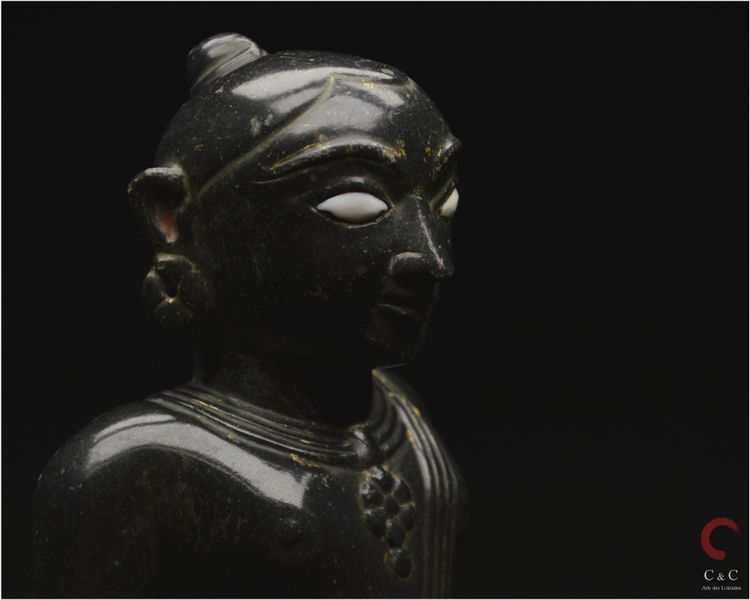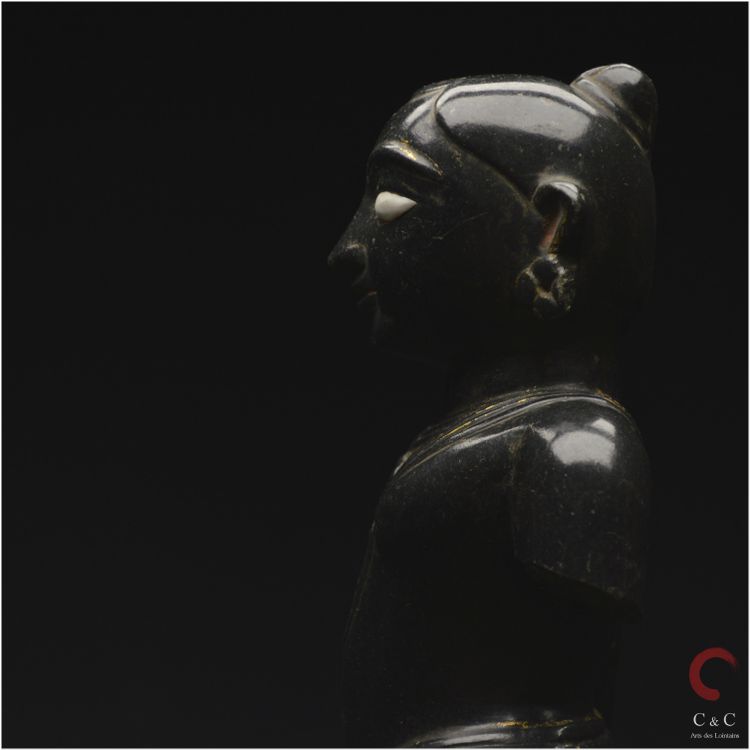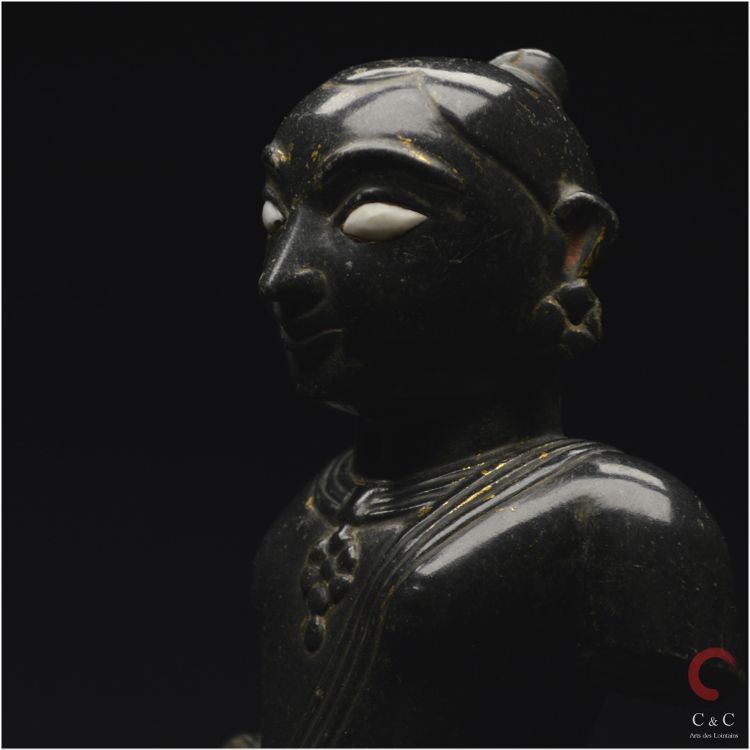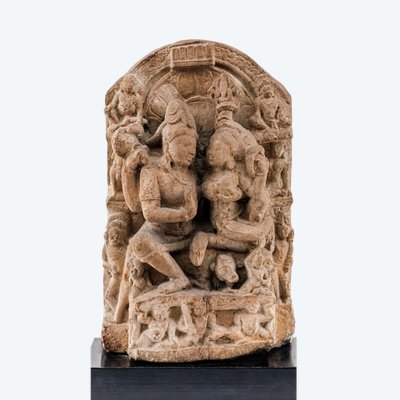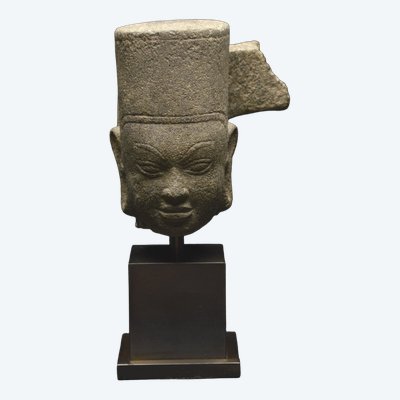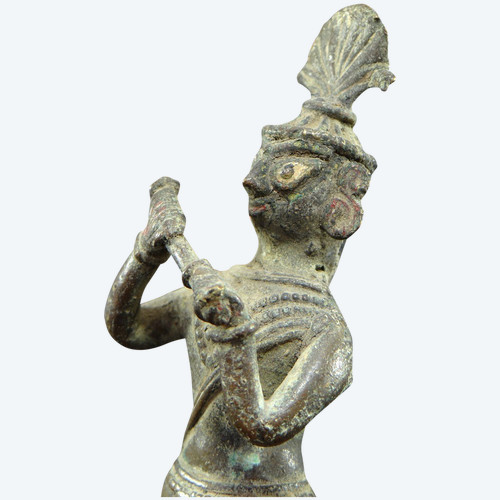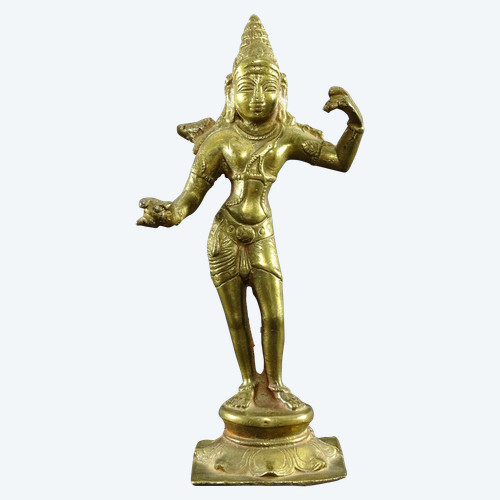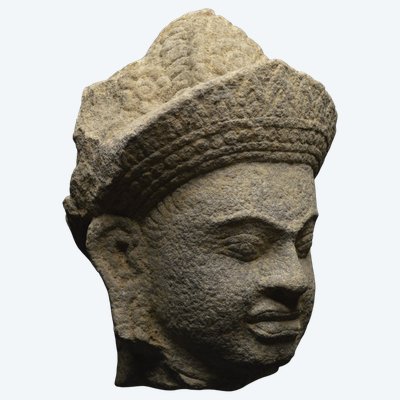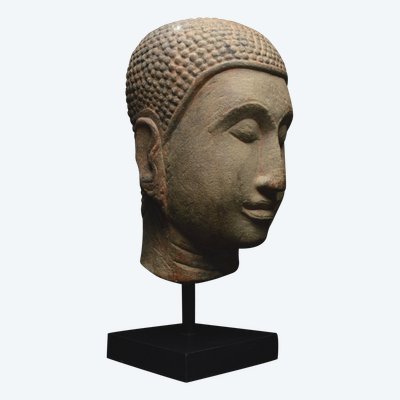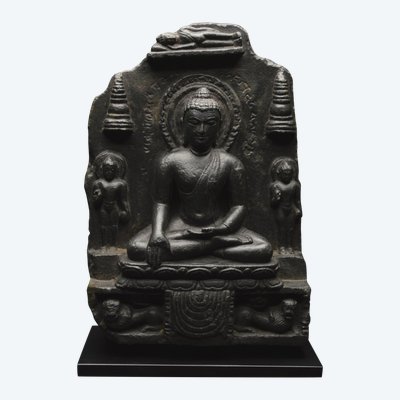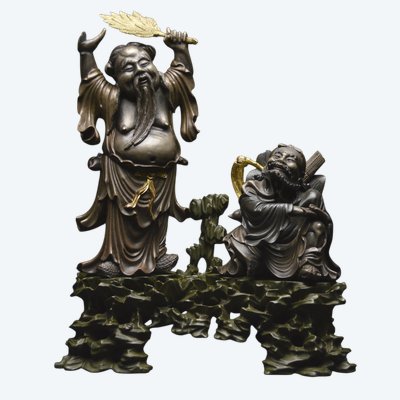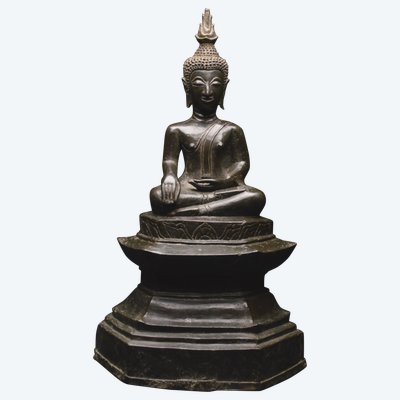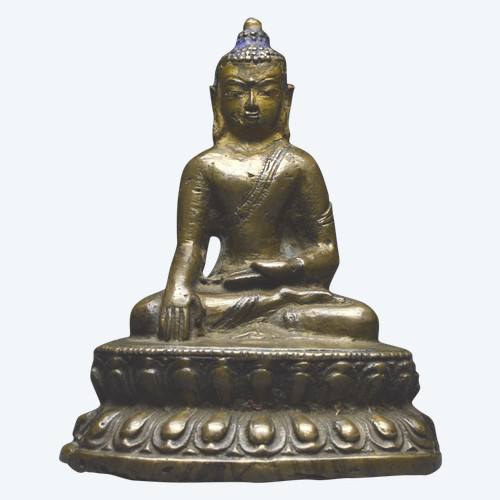This description has been translated and may not be completely accurate. Click here to see the original
Black marble representation of Krishna
India, State of Gujarat
Medieval period
15th century
Krishna is depicted standing in a hieratic posture, dressed in a simple dothi, his torso adorned with a wide Brahman cord, his massive neck supporting a wide necklace adorned with a flower-shaped pendant.
The face is characterized by long, comma-shaped superciliary arches framing almond-shaped lenticular eyes inlaid with white marble, giving the divinity an intense, almost hypnotic stare.
The aquiline nose, the thin-lipped mouth sketching a slight smile. The hair is pulled back flat against the skull, ending in a bun tied at the back of the head, and the ears are adorned with large circular pendants.
°°° Krishna, eighth avatar of Vishnu, is one of the central figures of the Hindu pantheon, at the crossroads of theology, mythology and philosophy.
In the tradition associated with the cult of Vishnu, he is not simply a one-off divine manifestation, but the supreme expression of the divine, embodying cosmic consciousness itself. He is the model of divine intervention in the world, both intimate and transcendent.
Through his actions in the Mahabharata and Puranas, he illustrates the convergence of spiritual paths: devotion, wisdom and righteous action.
°°° Our piece bears witness to an artistic syncretism characteristic of 15th-century Gujarat, a region marked by the close coexistence of Hindu and Jain communities.
This Jain influence can be seen in a number of distinctive aesthetic elements:
- The hieratic posture and the position of the right arm contrast sharply with more classical Hindu representations of Krishna, where he is often depicted in gracefully swaying poses such as the tribhanga, typical of the iconography of the Krishna Venugopala.
- The use of black marble and the fixed gaze with large white-encrusted eyes are directly reminiscent of the conventions of Jain sculpture, particularly those applied to tirthankaras, the major spiritual figures of Jainism.
- The pendant worn by the deity also evokes the shrivatsa, the distinctive ornamental symbol of Jain saints.
The presence of scattered traces of gilding and cinnabar around the eyes, mouth and ears (to awaken the divine presence and attract blessing) testifies to sustained ritual use.
The dimensions of our statuette, combined with the above-mentioned elements, point to two hypotheses as to its cult context: it could have been placed in a niche in a temple, as a figure associated with a principal divinity, or it could have been used as part of a domestic cult, within a private space.
Black marble
Visible damage, wear and tear
Localized traces of gilding and cinnabar
19 x 11 cm excluding stand
Private European collection
We contacter: culturesetcivilisations@orange.fr
Ref: D9E1AOPO6W
 Blackened wooden cabinet, 17th century.
2.700 € EUR
Blackened wooden cabinet, 17th century.
2.700 € EUR
 Gold, Silver and Diamond "Turtle" Brooch
1.900 € EUR
Gold, Silver and Diamond "Turtle" Brooch
1.900 € EUR


